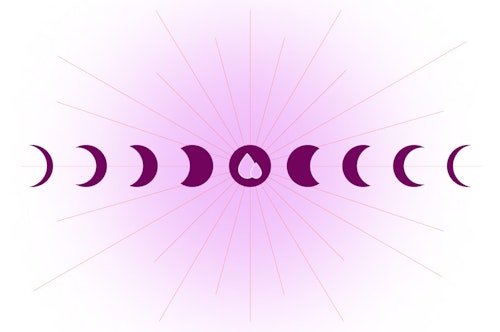Key takeaways:
- The results show a weekly rhythm linked to menstruation, where periods most often start on Thursday and Friday
- Lunar rhythm also affects menstruation to a much smaller degree, with periods most often starting in the phases around the full moon
There has been some previous research done on the effect of the moon on the menstrual cycle, but the results have been varied, and the studies themselves have been quite small in size, i.e., on relatively few participants each time. Thanks to our Cyclers, who have given consent for us to use their anonymized data for research, Natural Cycles has access to lots of cycle data from many different women over many lunar phases. This enables us to look into these types of topics further and investigate small effects that can only be seen in large data sets.
In this study, the Natural Cycles Research Team worked with renowned researchers in the field, to investigate if the moon (meaning the rhythm of the lunar cycle) has any effect on when menstruation starts. Additionally, they also set out to analyze if a weekly biological rhythm, aka the circaseptan rhythm, (which has been described in previous research) has any effect on this.
We analyzed 311,064 cycles from 35,940 anonymous Natural Cycles users collected between 2019-2021. The aim was to investigate the timing of when menstruation started in relation to the weekly rhythm (meaning which weekday menstruation started), and in relation to the different lunar phases (in which lunar phase menstruation started). The analysis also took age, cycle length, and season into account.
The results showed that the weekly rhythm did have an impact on the timing of menstruation. It was the most common that menstruation started either on Thursdays or Fridays, and this was the case in all age groups, seasons, and lunar phases. However, the effect was especially noticeable in cycles that were between 27-29 days long, and even more so in the winter season. In the winter season, the effect was not noticeable for those with other cycle lengths.
Lunar phases also had an effect on the timing of menstruation, although this was much less noticeable than the day-of-the-week findings. Menstruation most often started in the phases around the full moon (more specifically, Waxing and Waning Gibbous and last quarter). This effect was present for all cycle lengths and age groups, but the peak time of period onsets changed depending on the season.
The results also showed a small interaction between the weekly and lunar rhythms, and it’s possible that they affect each other. However, more research is needed to understand how – and another study is already planned to further investigate the weekly rhythm. Have you noticed lunar patterns related to your cycle, or does your period usually start on a certain day of the week? Remember you can always use the notes feature when you add period dates to keep track of any additional data you’d like to log.
Original Paper
Written by
Freya Eriksson, Customer Communications and Translations Manager
